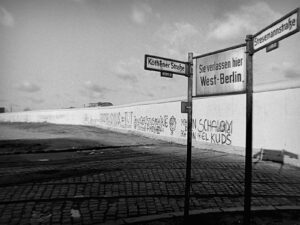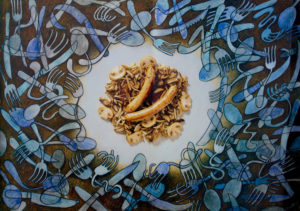
Swiss National Museum
The national exhibition of 1939
The national exhibition of 1939 was not only a centre for the spiritual defence of the nation – it was also a hugely successful exhibition. With over 10 million visitors, it was extremely popular as well.
The national exhibition was originally supposed to be held 1933, but a scheduling conflict with another major event and the Great Depression thwarted the organisers’ plans. The planning activities finally began in 1936. Under the direction of Armin Meili, the most successful Swiss national exhibition to date was held only a short time later. Not only did over ten million visitors attend the event, but the national exhibition in Zurich was also a huge financial success: It generated a profit of over six million francs.
Nevertheless, it was a turbulent time. The after-effects of the Great Depression were still felt around the world, and in Europe Hitler’s Nazi Germany and Mussolini's fascist Italy had become serious threats. The exhibition was therefore not just an exhibition, but became an important centre for the spiritual defence of the nation. This concept had been promoted since 1933 by parliamentarians such as National Councillors Johannes Huber and Henry Valloton, intellectuals and journalists, and in 1938 it was more or less officially mandated by the Federal Council. The result was not only a call to defend the country spiritually against possible attacks, but also to cultivate and protect the national culture. The Federal Council’s message of 14 December 1938 to the Federal Assembly emphasised that the defence of the Swiss spirit was not to be achieved through defensive and negative action, but through creative deeds. A sum of 500,000 francs per year was earmarked for the preservation and promotion of Swiss culture. The money was to be administered by a new foundation called Pro Helvetia.

The Federal Council’s message regarding the organisation and objectives of preserving and promoting Swiss culture was published in the Bundesblatt on 14 December 1938.
Swiss Federal Archives
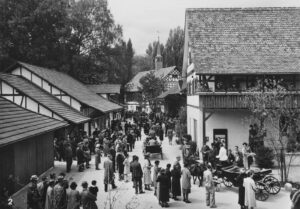
The Landidörfli country village was location on the Zürichhorn and drew many onlookers in 1939.
Swiss National Museum
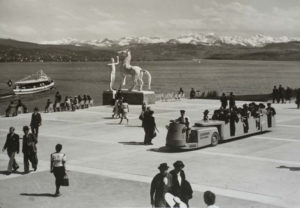
Otto Charles Bänninger’s “Boy with a Horse” (Knabe mit Pferd) at the national exhibition, which took place in 1939 in Zurich.
Swiss National Museum
MANY FAMOUS ARTISTS
The spiritual defence of the nation concept had a huge influence on the national exhibition. The fact that Swiss values were so well celebrated at the event was due both to the timing of the exhibition and to developments in trade, commerce and industry at that time. The suggested motto “quality and work” was met with a lukewarm response. Thus, the focus shifted increasingly towards creating an identity experience for people from all walks of life and political groups – and towards promoting local artists, who received important commissions from the exhibition. Among them were well-known names such as Alois Carigiet, Hans Erni and Otto Charles Bänninger. The Federal Council’s cultural message thus already began to have an effect soon after it was published.
ENTERTAINMENT AND INNOVATION
However, it would be unfair to attribute the exhibition’s success solely to the politically tense moment in history. Numerous attractions – such as a cable car that ran from one shore of Lake Zurich to the other, the Landidörfli country village and the Schifflibach boat ride through the exhibition grounds – drew many visitors and offered plenty of entertainment. The national exhibition in Zurich had something for everyone. While the women looked at the latest fashion trends, the children listened to a 19-year-old woman telling fairy tales in a nursery. Soon it was not just children who came to listen, and young Trudi Gerster became the queen of Swiss fairy tales practically overnight. Sport was also featured at the exhibition. In May 1939, a top-class junior football tournament was held with teams from Czechoslovakia, France, Italy and Switzerland. And at the exhibition’s Swiss wrestling competition, the “bad guys” got to show off their muscles.
In additional to varied entertainment, new architecture was also introduced in Zurich. The involved architects created buildings that were primarily functional and practical. This was the origin of the so-called “Landistil”, which was popular until the 1950s. An example of this is the Zurich Kongresshaus by Max Ernst Haefeli.
Even though both Landistil and the exhibition itself were later the subject of controversial discussion, the national exhibition of 1939 is still regarded as a successful and innovative show and is firmly etched in Switzerland’s collective memory.

The Schifflibach boat ride at the 1939 national exhibition in Zurich.
Swiss National Museum
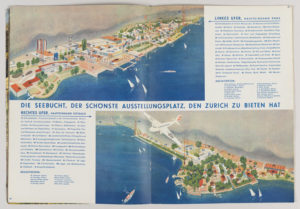
Brochure for the 1939 national exhibition in Zurich.
Swiss National Museum
Looking back at the 1939 national exhibition in Zurich.
YouTube


